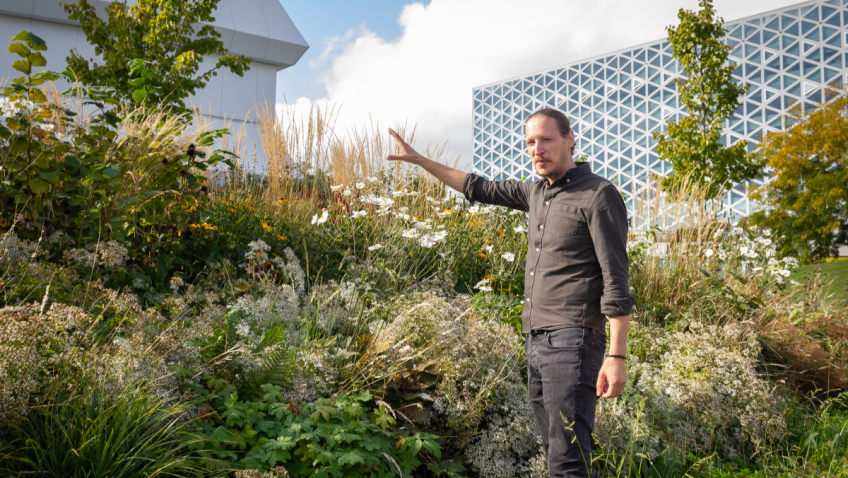In recent months, Windesheim has been able to see the plants, shrubs and trees in the ‘ecological plinth’ grow and bloom for the first time. A beautiful park full of biodiversity, says Biology lecturer Rutger Las.
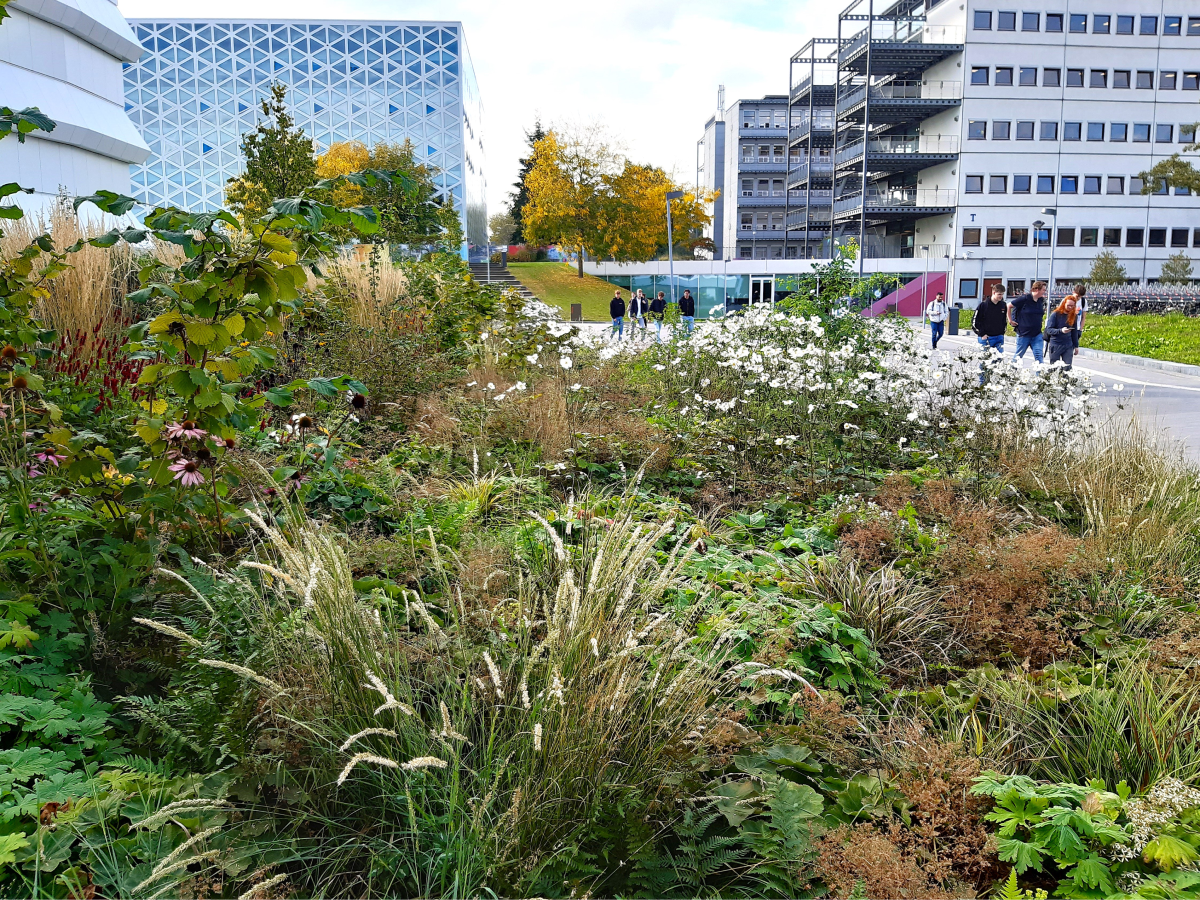
Last year, Windesheim started the construction of the ecological plinth on the Zwolle campus, as part of the Groene Hart (Green Heart) Campus project. The park is located along the promenade at the rear of building C. It consists of a large, partly raised border with a wide variety of trees, shrubs and plants.
The ecological plinth was designed for Windesheim by Copijn landscape architects. Here, nature is allowed to take its course much more than on the traditional, neat borders, where usually only one or two plant species grow.
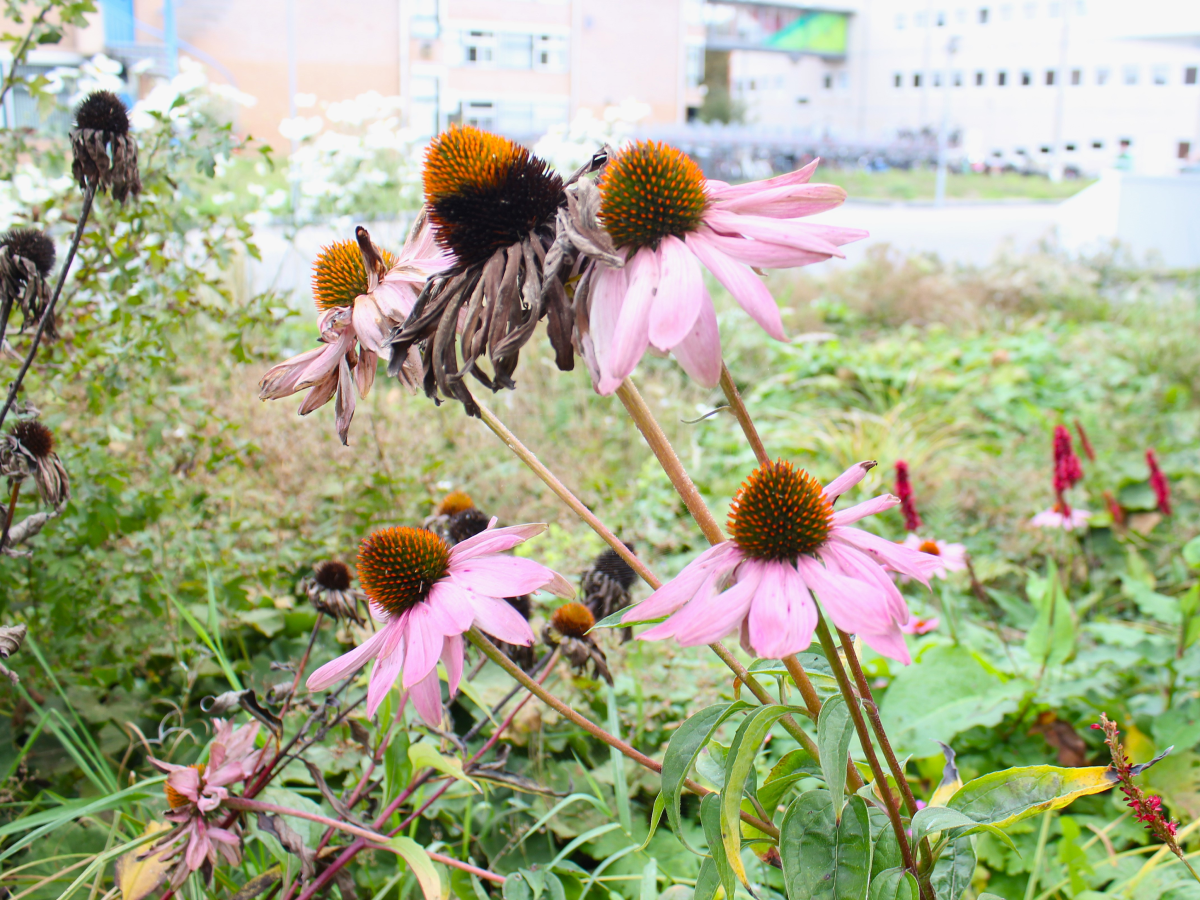
Rutger Las, lecturer at Windesheim’s Teacher Education in Biology specializes in ecology and biodiversity. Las thinks the ecological plinth has become a very attractive place. “Nature is given plenty of opportunities here and in doing so we help to preserve biodiversity in the area. And at the same time, this is just a very beautiful green place where there is a lot to see and people can relax for a while.”
An ecological border looks much more like a natural place along a forest or meadow, he says. “The elevations and the walls create a lot of variation. That is why so many different species can grow in this relatively small border. You can enjoy flowering plants here from early spring to late autumn.”
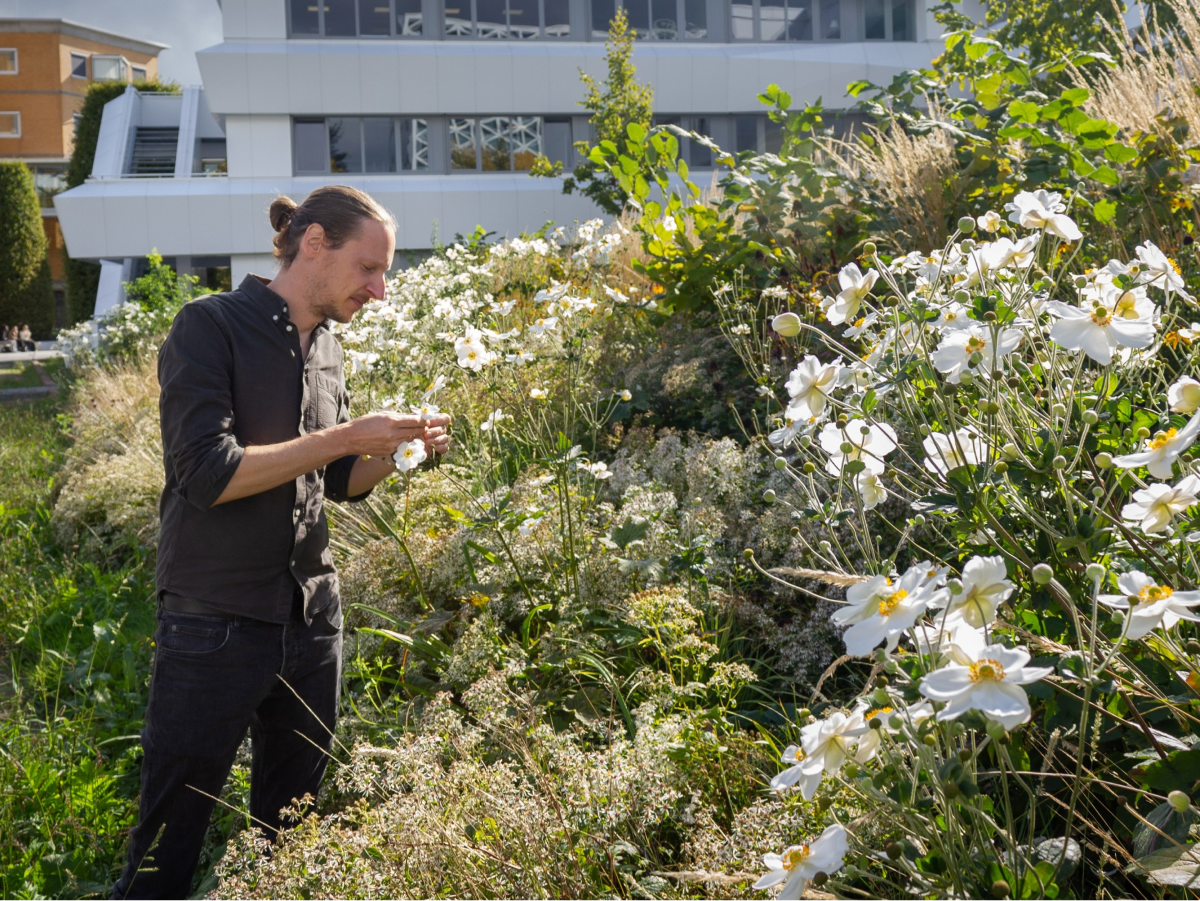
Last spring, the young plantings on the border were still new. But this summer, the purpose of an ecological plinth was visible in all its glory for the first time. Las: “Weeding and clipping are done less often here and nature is left alone. This also gives native plants and herbs a chance to grow between the plantings in the border. And the plinth also offers habitat, food and shelter for insects and birds.”
Las points to the top of the plinth, a varied, densely grown hedge of shrubs and low trees. “That is a Zeeland hedge, like they often used to be along meadows. Here, for example, grows a blackthorn, a native slow-growing shrub that produces berries in the autumn.” Under the hedge are white anemones, asters and yellow and purple coneflowers, which bloom late in the year.
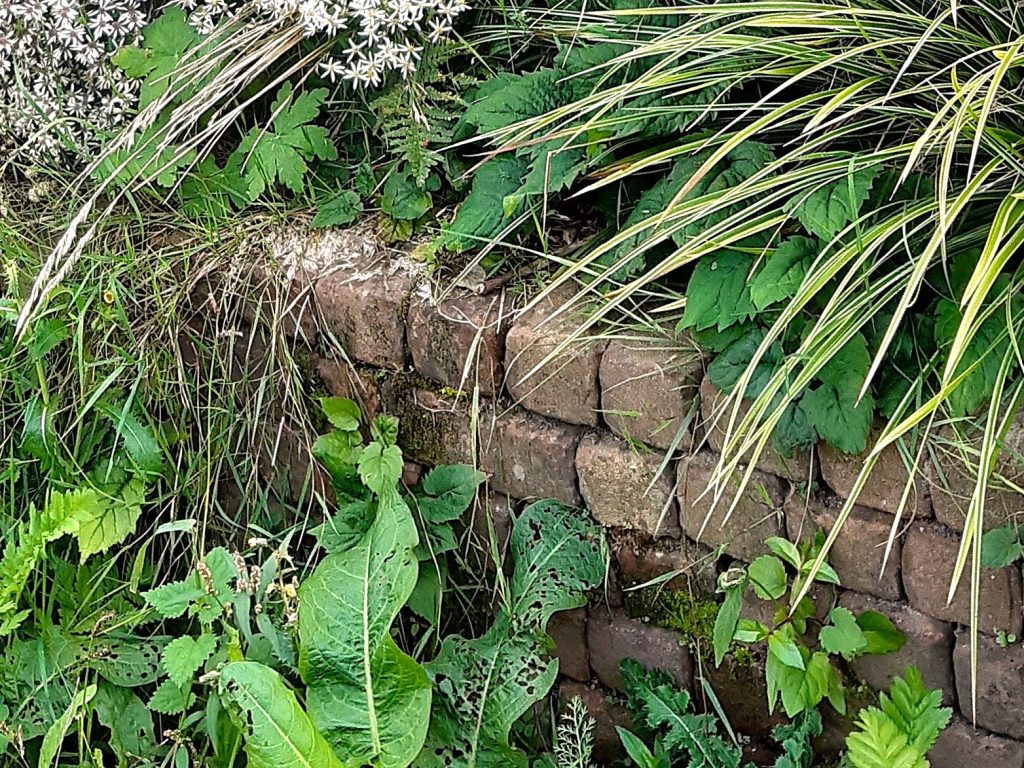
At the bottom of the border are walls of stacked bricks where other plant species thrive. Las soon discovers all kinds of spontaneously emerging native species here, such as sweet william, chamomile, dandelion and thistles.
The lower part of the plinth up to the pavement is a ‘wadi’: a flat strip that fills with rainwater after a downfall. The drainpipes of the adjacent building have been removed, so that the rainwater no longer goes directly into the sewer. Las: “The rainwater flows through the plants of the ecological plinth to the wadi. And what remains sinks into the ground there. This maintains the groundwater level better.”
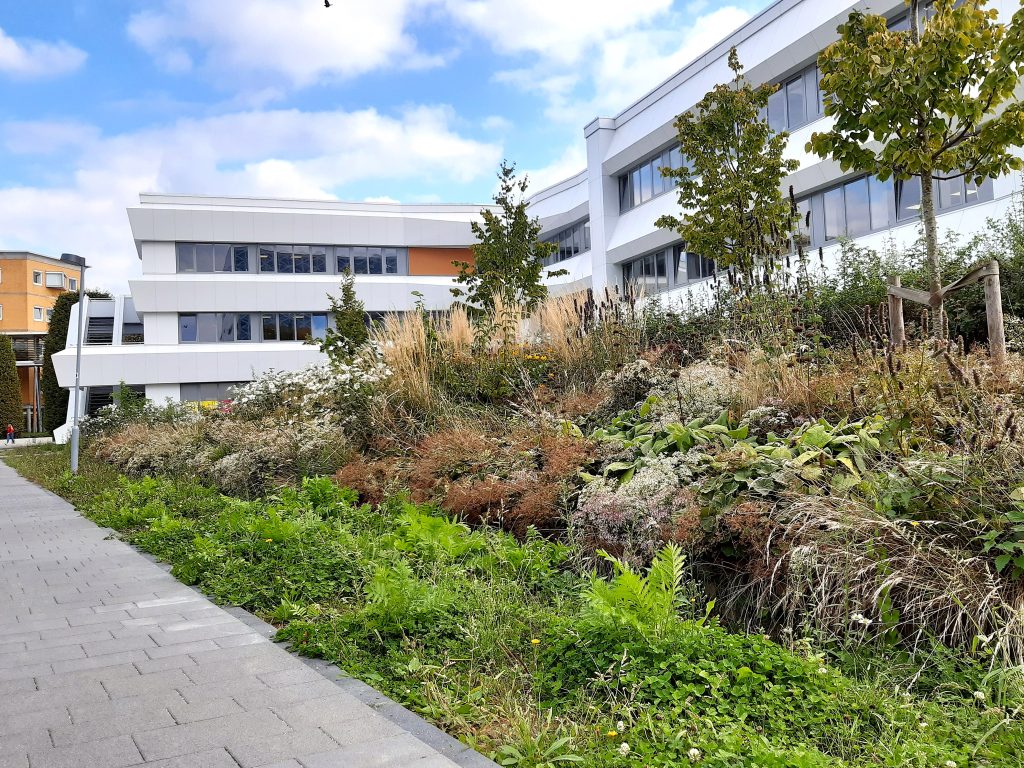
Only in the event of heavy rain the water still ends up in the sewer drainpipes along the promenades. “A wadi can be overgrown quite a bit, that actually promotes the absorption capacity of water.”
Las would not be surprised if an uncommon plant, the southern marsh-orchid, also starts growing in the wadi. “Because it happens to grow nearby, along the ditch opposite the campus.” What animals has the biology lecturer already seen in the ecological plinth? “Many insects and caterpillars, such as the carder-bee, the tiger hoverfly – a type of hoverfly – and the drone fly. And many butterflies, including the peacock butterfly and the painted lady. Who knows, the brown hairstreak might also come to the campus. Because I have seen that one nearby, at the railway embankment.”
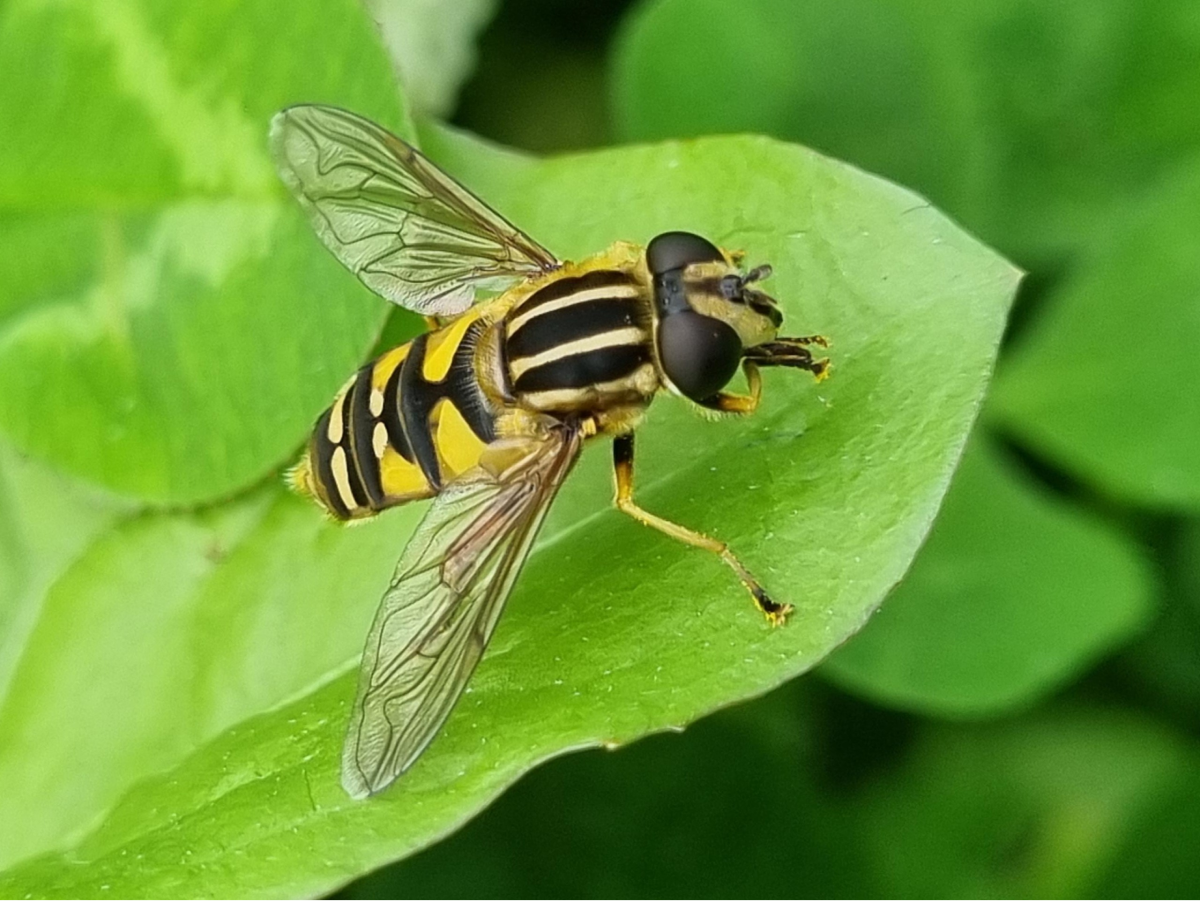
He always saw sparrows at the campus, around the large beech hedges. “And now that berries are growing on the ecological plinth, more blackbirds and starlings will undoubtedly be attracted to it.” According to the biologist, natural places such as the ecological plinth and the overgrown garden at building G make an important contribution to nature conservation in the area. “There should be many more places like this. But you can also help by mowing and clipping less intensively, which allows more native plants to bloom in the spring.” Las would find this plinth even more beautiful if Windesheim would opt for even fewer cultivated plants and more original Dutch species that are for sale at organic growers. “And maybe it would be a nice idea if there was a small walking path through the middle of the plinth, for people who want to look at the plants up close?”
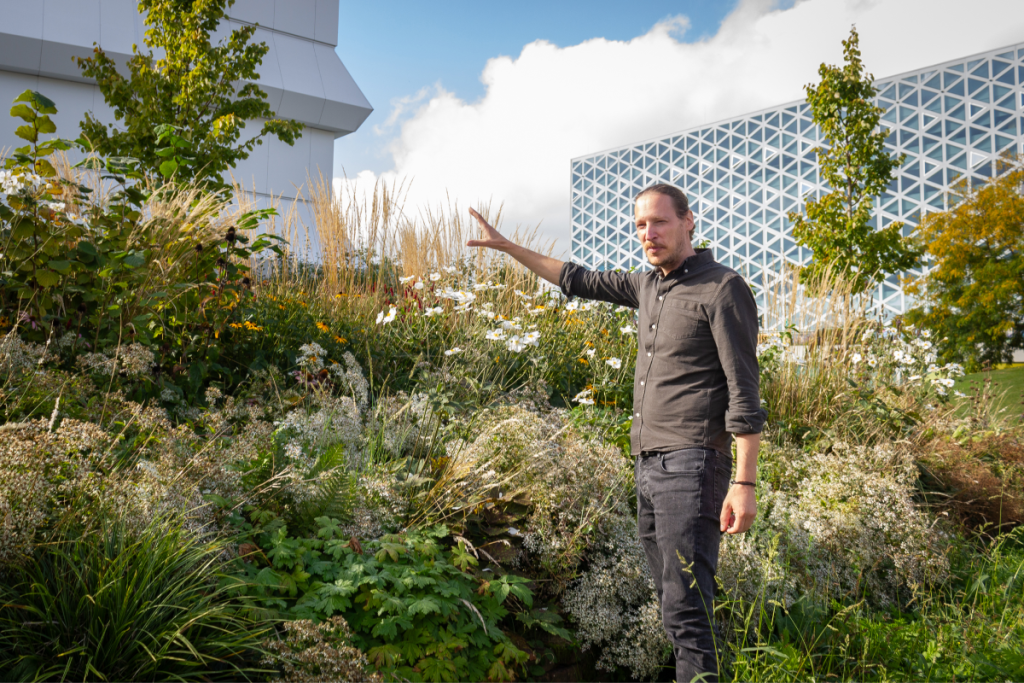
Text and photos: Ernest Mettes
